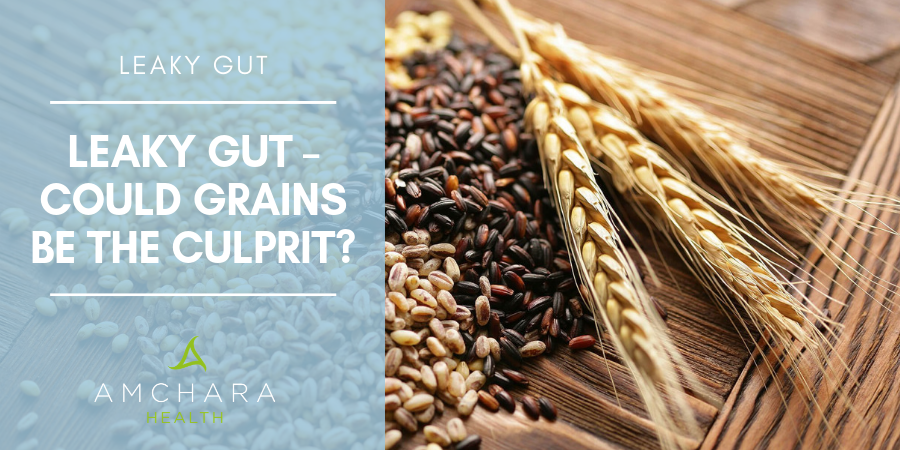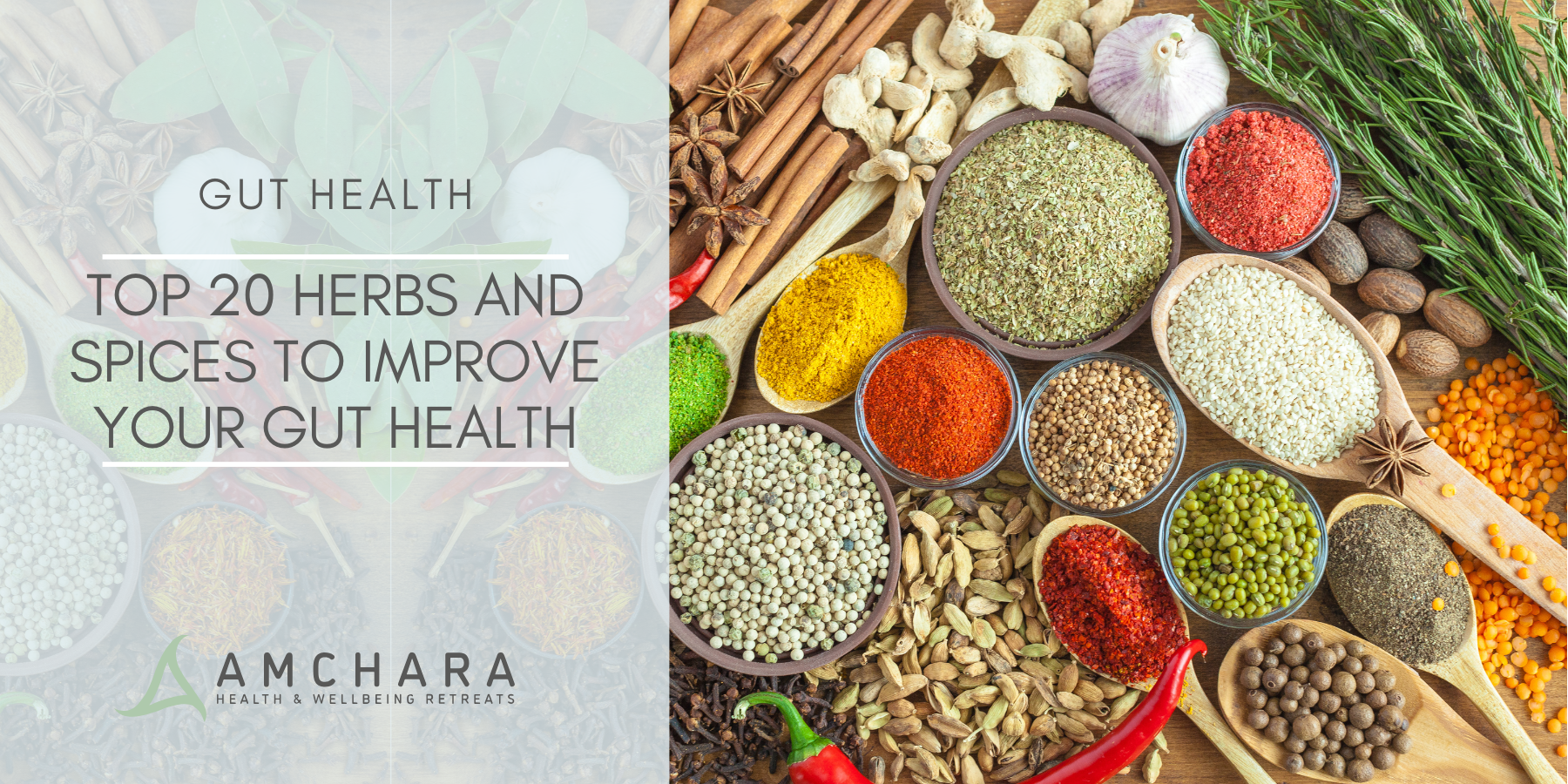Table of Contents:
You may have heard of the term leaky gut, also often called increased intestinal permeability.
While conventional scientific research traditionally hasn’t concentrated on this subject, many nutritional and naturopathic practitioners believe leaky gut is connected with many health problems.
Of particular interest is the link between leaky gut and grains, which are thought to contribute to the condition.
We always take an evidence-based approach and aim to provide you with actionable knowledge and tips to help you on your journey to optimal health.
In this article we will look at what can lie behind leaky gut and how this condition may be related to our consumption of grains.
What is Leaky Gut?
Our digestive system is lined by a layer of cells which have the important job of forming a barrier between what’s inside our body and what’s outside.
This allows nutrients and water to pass into the bloodstream, and excludes waste products and toxins from entering our body.
Along the length of the intestinal lining are tiny gaps between cells known as ‘tight junctions’.
Leaky gut occurs when the tight junctions open up and allow substances into the body which should be eliminated.
These can include incompletely digested food particles, microorganisms or toxins.
What Symptoms can be Related to Leaky Gut?
Increased intestinal permeability has been linked to many health issues, including:
-
Irritable Bowel Syndrome (IBS)
-
Autoimmune diseases such as coeliac disease
-
Food sensitivities
-
Chronic fatigue and fibromyalgia
-
Type 2 diabetes (1)
-
Depression and mood disorders and poor memory
-
Skin conditions
-
Migraine and headaches
-
Thyroid abnormalities
-
Alzheimer’s disease
-
Parkinson’s disease
-
Increased inflammation
-
Poor nutrient absorption
What Causes Leaky Gut?
We know the gaps in tight junctions expand as a result of the release of a protein called zonulin (2), which is produced by our intestinal cells. It’s a relatively recent discovery, and in fact science has only known about this substance since 2000 (3).
Researchers are currently interested in what causes zonulin to be released.
Many alternative health practitioners believe leaky gut is a result of chronic inflammation (4).
Some studies have linked the release of zonulin with increased inflammation (5), however it’s difficult to separate cause from effect.
We know certain food choices such as sugar, processed foods and alcohol are linked to raised inflammation in the body, but a more direct link with zonulin may be found by looking at grains.
What are Grains?
Firstly let’s be clear what actually is a grain. This is not as straightforward a question as it first appears.
A grain can be defined as the edible fruit of a plant, usually small in size and hard on the outside.
Grains come from grass-like crops and they usually grow on the top of the plant stem in clusters.
They are distinct from seeds, which are the embryo of a plant.
The grain contains both the seed and the fruit to feed the embryonic plant.
Grains can be classified according to whether or not they contain the protein gluten.
Gluten grains include:
-
Wheat – the most widespread type of gluten grain. It can also be called bulgur, couscous, orzo, durum wheat or semolina.
-
Rye
-
Barley
-
Most oats, unless certified gluten free. This is because many commercially-produced oats are contaminated with gluten-containing grains during processing.
-
Spelt, an ancient type of wheat.
-
Kamut, which is another ancient wheat grain, sometimes known as oriental wheat.
-
Triticale, which is a hybrid of wheat and rye.
Non-gluten grains include:
-
Corn or maize – they are the same crop but the word maize is often used in USA.
-
Rice
-
Sorghum – popular in Africa and Asia. It is an ancient cereal grain used in a similar way to wheat.
-
Oats if certified gluten-free. They must be grown in locations where wheat is not also grown, and not contaminated with gluten during processing. Oats contain a protein called avenin rather than gluten.
Some seeds look like grains and are prepared in the same way. These are called pseudocereals, and include:
-
Millet – actually a gluten-free grain-like seed grown from a type of grass. Millet has been cultivated for thousands of years.
-
Teff – has a nutty flavour and is a staple of Ethiopian cooking.
-
Amaranth – another ancient crop, often thought of as a grain but actually from a different plant family, a distant relative of spinach and Swiss chard.
-
Buckwheat – despite its name, buckwheat is not related to wheat, but belongs to the same family as rhubarb and sorrel.
-
Possibly the best-known of the pseudocereals, quinoa is the seeds of a plant called goosefoot.
A Word about Gluten
Although mankind has been eating gluten-containing grains for thousands of years, it has in recent times become associated with health problems, especially those connected with digestive wellness.
Gluten grains are incredibly widespread in modern diets, with some form of gluten easily popping up in almost every meal and snack of the day.
Many people consume a huge amount of grains each day, particularly wheat, as they’re present in so many processed foods such as bread, cakes, pastries, sauces, ready meals and breakfast cereals.
Modern crop varieties are intentionally grown to provide significantly more yield than crops grown even as recently as 50 years ago.
It’s thought these crops have altered so much they behave differently in our body once we’ve consumed them.
One consequence of this may be increased inflammation (6).
Add to this that most non-organic grain crop is routinely treated with weed killers and pesticides in order to further increase yield, and we have a cocktail which can easily damage the gut lining.
Research has shown herbicides containing chemicals known as glyphosates can destroy the beneficial bacteria in the gut (7).
Part of the role of our beneficial gut bacteria, collectively called our microbiome, is to keep the gut lining healthy and research has shown an imbalance in the types of bacteria present can be related to leaky gut.
The word ‘gluten’ means ‘glue’ in Latin, and in fact gluten forms a sticky mass not only during bread making but also once it reaches our intestines, which can create a barrier to nutrient absorption.
Because gluten is a large and complex molecule, it can easily end up being only partially broken down, and if it’s absorbed in this state the body will mount an immune response to it, leading to gluten sensitivities.
Gluten is comprised of a combination of one protein called gliadin and another called glutenin.
Gliadin gives bread its doughy texture. Gliadin has been found to stimulate the release of zonulin (8), opening up those tight junctions.
However, genetics plays a role here – only a specific cell receptor which is ‘turned on’ by genes reacts to the zonulin.
Lectins
Even commonly eaten foods can contain substances which may be harmful to the body.
Sometimes referred to as anti-nutrients, one example are lectins, a type of protein found in grains such as wheat, spelt and corn, as well as in beans and lentils.
Research now suggests lectins may contribute to inflammation (9) and damage to the gut lining (10), as well as impeding absorption of nutrients (11). It’s the presence of lectins in red kidney beans which makes them poisonous if they’re insufficiently cooked.
Wheat contains a type of lectin which is particularly problematic.
It may be that the plants developed lectins in order to protect them from insect pests.
In evolutionary terms it makes sense for the seeds of plants to contain anti-nutrients because they don’t really want their seeds to be eaten; they would prefer them to grow into new plants.
The lesson here is to enjoy a variety of food with everything in moderation.
Cooking at high heat will destroy lectins, and soaking, sprouting or fermenting grains or legumes reduces the activity of the lectins.
Of course we are all unique, and some people can tolerate grains while others will find them a problem.
Our genetic makeup and the lifestyle factors which determine our gene expression influence how grains effect our digestive system.
How can I Support a Leaky Gut?
A juice cleanse at an Amchara retreat or in your own home can give your body a break from grains, help reduce inflammation in your body and so kickstart the healing process in the gut.
Long term it can be helpful to change your mindset about grains – think of them as a treat, rather than as a staple food.
Some people may find they feel better when they avoid grains completely, particularly the gluten-containing grains like wheat, spelt, rye, and barley.
Any grains or pulses are best eaten after having been soaked or sprouted to reduce the activity of the lectins.
A huge array of ‘free from’ foods are now available, as food manufacturers have seen a commercial opportunity in people wishing to avoid gluten grains. However, many of these alternative foods contain food additives, preservatives, little fibre and even added sugar which are can further damage the gut lining.
It makes sense to adopt an anti-inflammatory eating plan – plenty of colourful fresh fruit and vegetables, seeds, fresh nuts, plant protein such as beans and lentils as well as oily fish, while reducing sugar, processed foods, red meat and alcohol.
Fermented foods can replenish your natural gut bacteria – try sauerkraut, kefir or kombucha.
Takeaway
Because the health of the digestive system has such far-reaching effects on our general health, the symptoms of a leaky gut are similar to those connected with many other body imbalances. Here at Amchara we like to ‘test, don’t guess’.
Testing can be useful to evaluate your digestive health and pinpoint the causes of ill-health. An analysis of your stool can tell you about the health of your microbiome, inflammation levels and how efficiently you are digesting and absorbing your food.
A consultation with a natural health practitioner will look at your own personalised health history and can suggest tests to enable nutritional and lifestyle recommendations geared to your health goals.
This can also help you determine whether grains are an issue for you.
We hope you enjoyed this article.
Have you experienced leaky gut?
What measures have you taken to restore your gut health?
We’d love to hear from you.
READ THIS NEXT:




